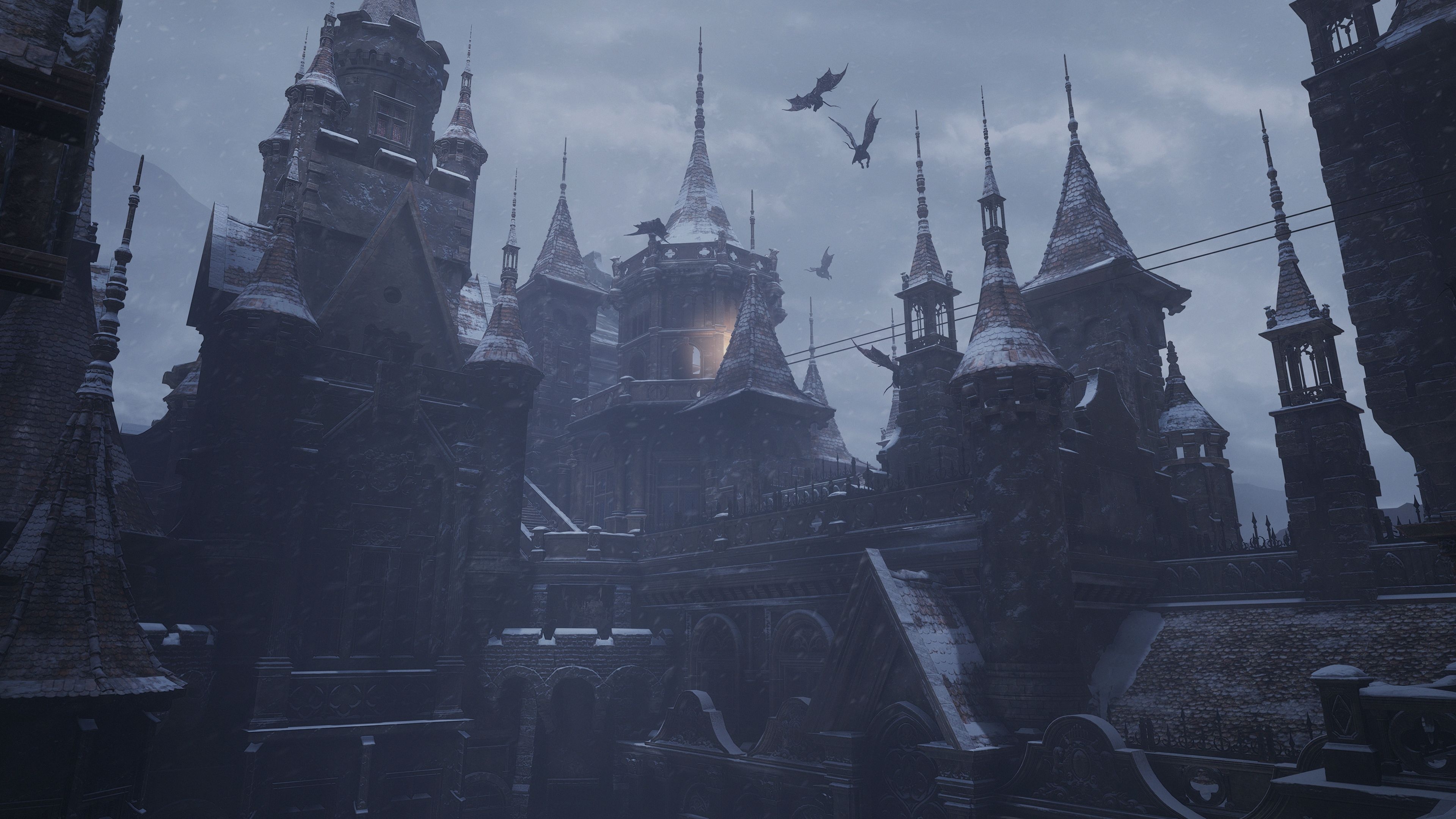There’s lots of RE4’s iconic DNA here. It’s obviously there in the eponymous setting: a snowier, marginally more open variation on the besieged European backwater of the older game. The enemies sometimes attack in swarms; among their ranks is something scaly and scary and large lurking beneath the surface of a murky body of water. Perhaps most notably, Village revives the marketplace inventory supply system of RE4, merchant duties passing to a rotund dandy called The Duke whose magical ability to be anywhere and everywhere stretches the limits of Resident Evil’s already negligible realism. (Those who like their nostalgia trips heavy on winking callbacks will be delighted to learn that this talking in-game store knows the catchphrase of his slimmer inspiration.) Capcom is supposedly working on an actual, official remake of RE4, but that may look even more redundant after this unofficial one.
Still, for all it owes to Leon Kennedy’s misadventures through parasite-plagued Spain, Village is its own game with its own offbeat personality. If it can be believed, it may well be the kookiest Resident Evil yet. A storybook prologue sets the uniquely whimsical tone, far removed from the dystopian action-movie vibe of prior installments. Still shaken by the horrors he survived in Louisiana, Ethan finds himself rushing to save another damsel in distress—this time his infant daughter, who’s been kidnaped by a counsel of eccentric monster barons not unlike the weirdo bosses of a Metal Gear game. (Village makes that unlikely parallel quite explicit, in fact, with a late, heavy-artillery showdown.) These colorful super-villains deliver dastardly monologues, leave you alone to escape unguarded rooms after capturing you, and curse your name (“Damn you, Winters!”) as you inevitably blow them to smithereens. The most memorable of the lot is almost certainly Lady Dimitrescu, the already internet-famous, nearly 10-foot-tall vampire countess that stalks you from room to room, like a more glamorous (and taunting) version of the Nemesis.
The game keeps throwing curveballs, narrative and conceptual. For a while, you have to wonder what any of this Underworld nuttiness has to do with a bioweapon corporation and its baffling ability to just keep covering up a new outbreak every few years. (How does Umbrella have any stockholders left?) Village finds shrewd ways to at least briefly complicate our relationship to past Resident Evil heroes, and one big twist plays like a clever commentary on the unlikely durability of video game avatars, taking a licking (sometimes literally) and still ticking. To match the unpredictable trajectory of its melodramatic story, the obstacles shift, too. The game knows just when to rob you of your slowly assembled arsenal and when to supply you with a new one: There’s a surprising variety to the gameplay, which pivots from the kind of back-against-the-wall, evade-or-die suspense of the original to a late, run-and-gun mission that rewards your prior restraint with a much larger stockpile of resources and a much less conservative strategy for dealing with the unholy.
If there’s a dark-comic center to all this goofiness, it’s once again Ethan, prototypical wife guy and harried, suburban alternative to the steely special-ops professionals who once invariably headlined Resident Evil. Perhaps the dude’s everyman quality is meant to match the first-person perspective of the new games, which seek to thrust us ever more deeply into the nightmare scenario they unfurl. Ethan suffers a lot of abuse over roughly 10 hours of game, much of it directed at his hands—the only part of him we ever see, holding a gun or rising to ineffectually block his face. Is this, too, an attempt at forced identification, constantly brutalizing the body part players themselves use to control the character? Regardless, the constant assault on his vulnerable digits accumulates a slapstick absurdity. It’s more charming, certainly, than the sense that this is all some parable of threatened masculinity—an impression fortified by Ethan’s tussles with various emasculating harpies and a climactic struggle that amounts, ultimately, to a very intense custody battle. (The word “bitch” flies as frequently as the squirting blood in this game.)
Part of what made Resident Evil 7 special was that it felt like both an evolution and a throwback. The first-person approach offered a literal new point of view on the usual narrow escapes and hideous encounters. At the same time, the series was reconnecting with its roots, reviving the low-ammo, flight-instead-of-fight fundamentals that it had lost sight of over the previous decade. Village isn’t quite as elegant a revival; its Doom vision doesn’t suit frantic warfare as well as it did the old-school hiding and running of RE7, and there are times when a player might wish that the camera would drop behind the shoulder again, completing the RE4 effect. But this is still a fast-paced, addictive, and gorgeously immersive addition to Capcom’s undying series. And for one tense, inspired detour—an unarmed ramble through a haunted house, adding some Conjuring energy to the grab bag of genre tricks—the game finds an angle Resident Evil never has. You may think you’ve seen every unspeakable monster these games have to throw at you. Baby, think again.


 Keep scrolling for more great stories from A.V. Club.
Keep scrolling for more great stories from A.V. Club.